Joseph Smith established the Mormon religion in 1830 in upstate New York, an area of intense religious activity at a time when revivalists, millennialists, preachers and prophets competed for adherents. Mormonism is a proselytizing religion and as their numbers grew the Mormons were unwelcome by mainstream Christians wherever they went, so they kept moving westward. Believing that the Garden of Eden lay in western Missouri and that the Mormons ought to establish themselves there, large numbers of Mormons arrived in Missouri in 1833 (and continued arrivals). Missouri was the scene of several years of hostile, even fatal, encounters between Mormons and the non-Mormon population.
On October 27, 1838 Missouri Governor Lilburn Boggs issued the “Mormon Extermination Order,” claiming that the Mormons had openly defied the laws governing the state and that they had made war upon the state’s citizens. Boggs directed that “Mormons must be treated as enemies, and must be exterminated or driven from the State if necessary for the public peace” (Executive Order 44). Several hundred men of the Missouri state militia and other state authorities forced the Mormons our of Missouri. Their only real choice of where to go was east, back across the Mississippi River (although some were able to make it to St. Louis which, although in Missouri, sheltered them).
It took a couple of months for the Mormons to make their way across the state to the banks of the Mississippi for the shortest crossing of the river over to Quincy. On the Quincy side of the river residents watched as hundreds of freezing Mormons on foot and in wagons, stuck in the snow of a very cold winter, stretched out along the west bank of the river and looked for a way to cross the icy water, which alternately froze and thawed. By late February 1839 some five thousand Mormons had made it across to Quincy, with a population of fewer than two thousand (estimates are 1,600-1,800).
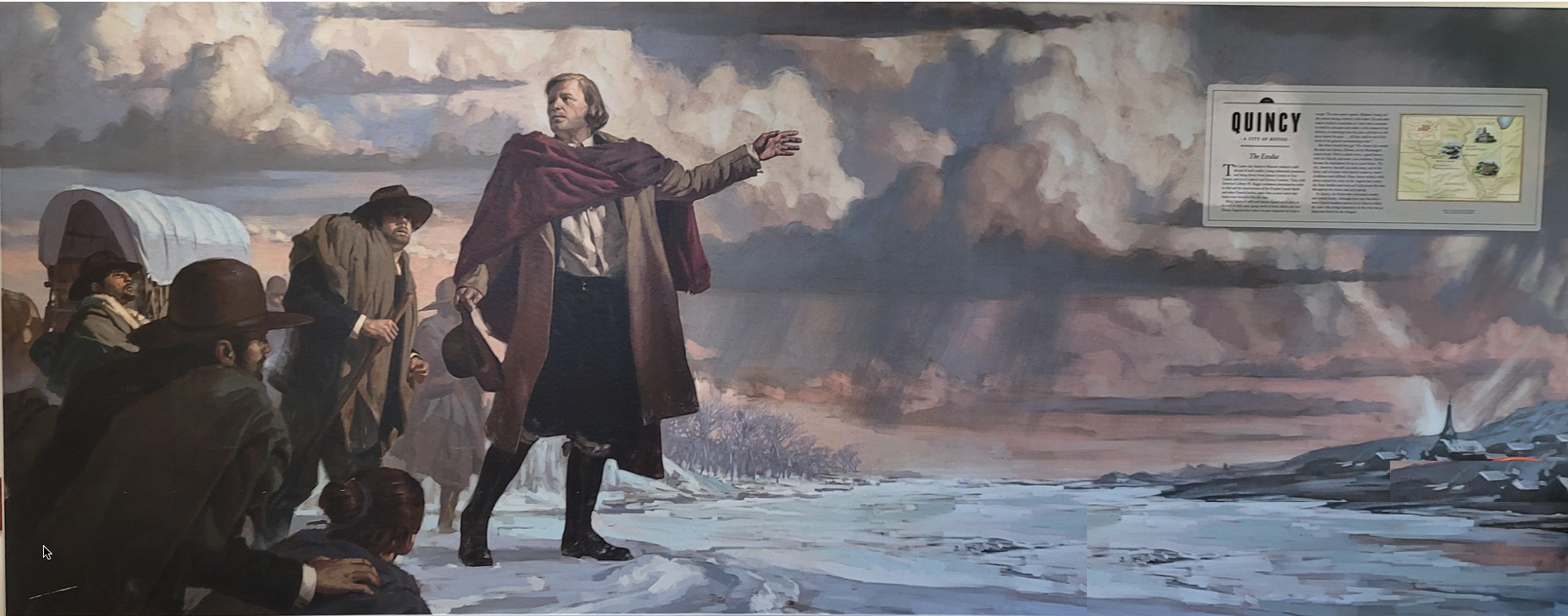
Painting in a dorm at Bringham Young University, Salt Lake City. Courtesy: Jasmine Holmes
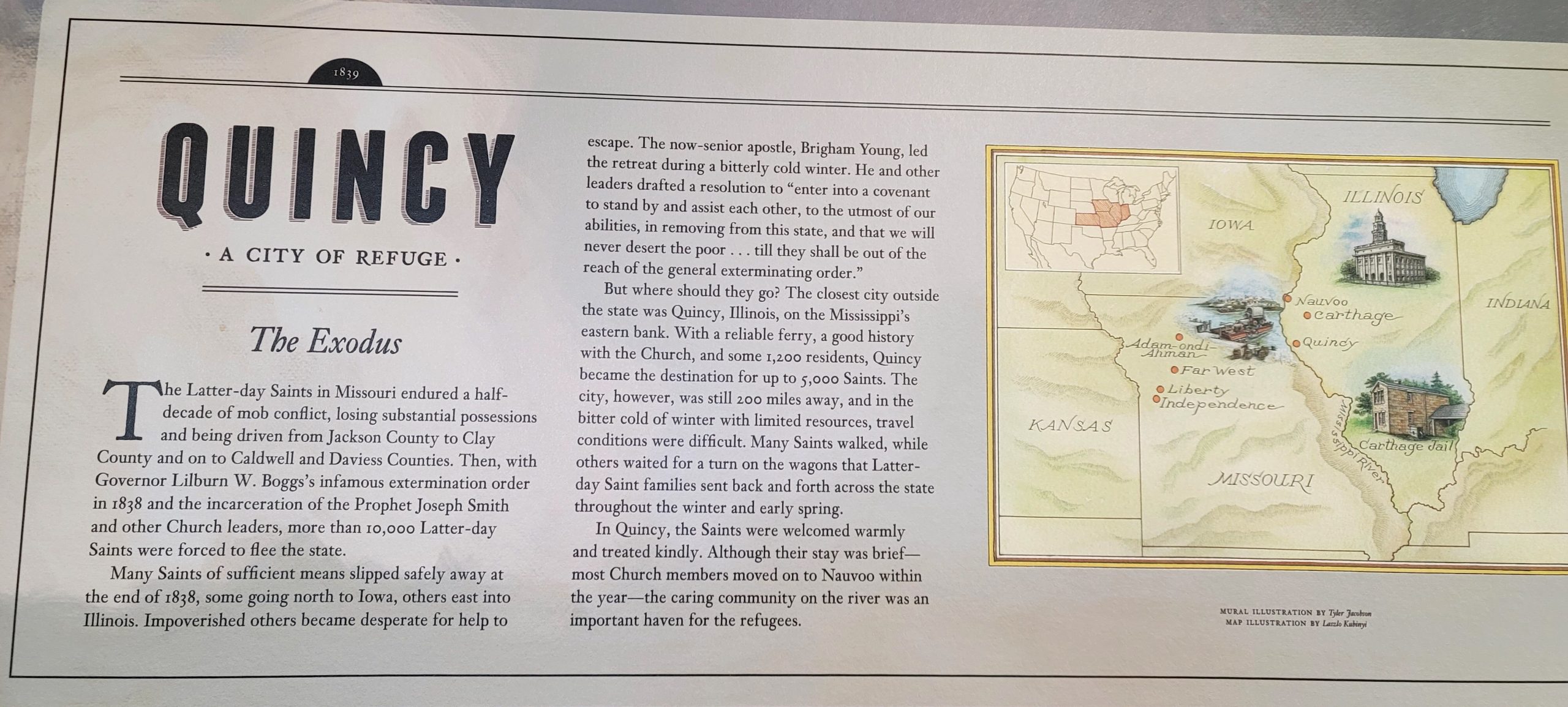
Detail of the panel in the painting, explaining Quincy’s role. Brigham Young University, Salt Lake City, Courtesy: Jasmine Holmes
In Quincy, the Mormons were received with charity by the Christian population and given shelter, food and jobs. The assistance of Quincy – both of Quincy men who braved the water and carried supplies to the west bank of the river and of the town itself once all the Missouri Mormons had arrived – is called “the Quincy miracle” by Mormons.
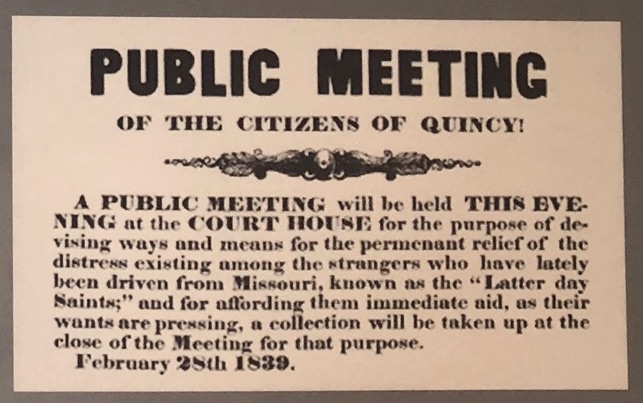
For three months Quincy was the center of the Mormon religion. But in May 1839 Joseph Smith moved his congregation to Nauvoo (then called Commerce), to establish their own settlement. A few Mormons remained in Quincy, one of who was John Young, the father of Brigham Young, who in 1846, following the murder of Joseph Smith and his brother, would lead the Mormons on their trek west, ultimately to Utah. John Young is buried in Quincy.
“The Quincy Miracle” of the winter of 1838-1849 did not end with the Mormons’ 50-mile migration to Nauvoo. When virulent anti-Mormon sentiment erupted in 1846 in this corner of Illinois and led to most Mormons fleeing across the Mississippi River again into Missouri to undertake their westward flight across the continent, it was the Christian population of Quincy that once more came to their aid, loading river barges with food, clothing and supplies to assist the poorest Mormons undertake their new journey.
A historical marker in the town square recalls that event. A large exhibit in the local history museum across the street tells that story with historical photographs and artifacts from the times. Quincy is rightly proud of this extraordinary act of charity. 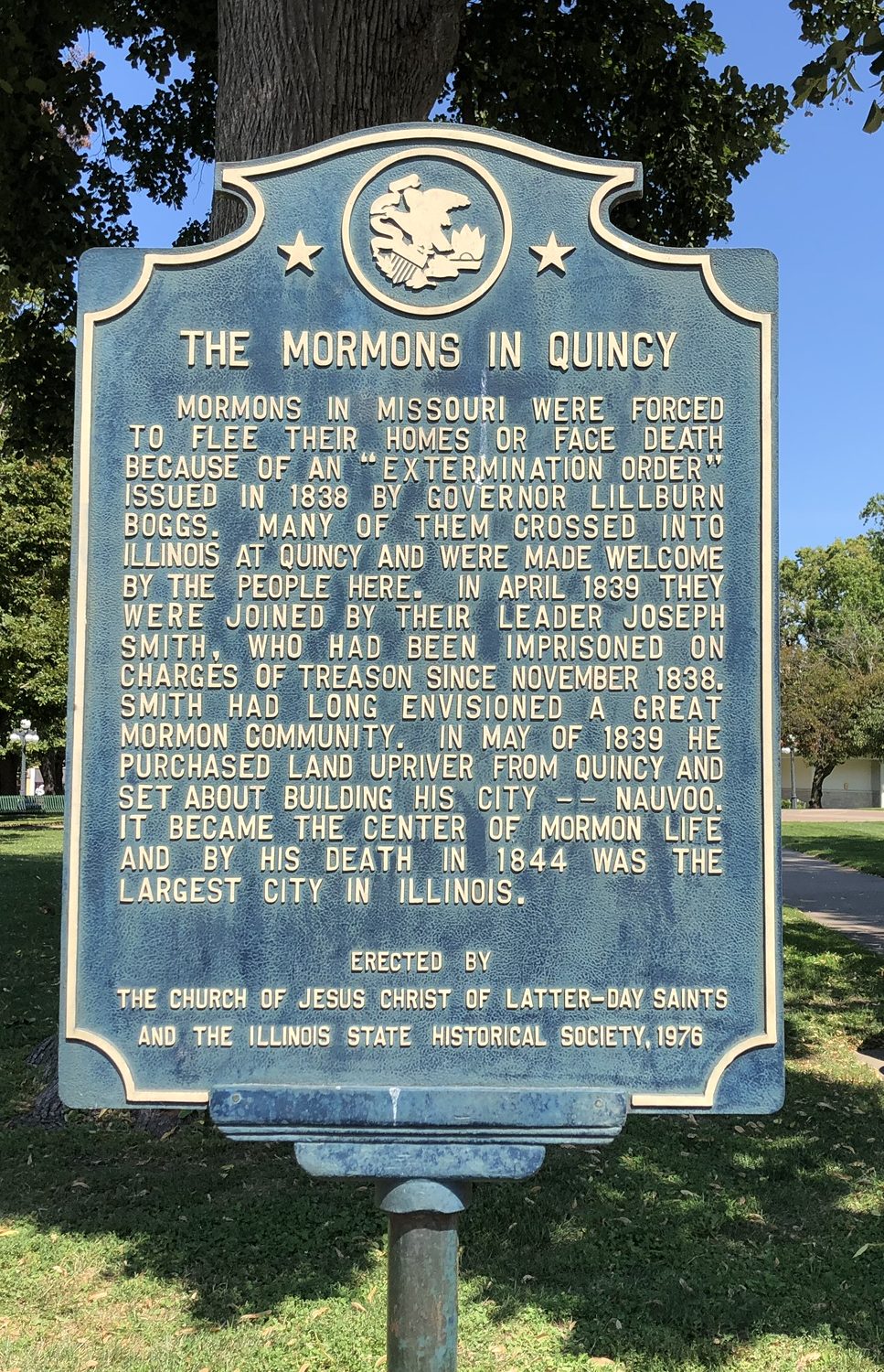
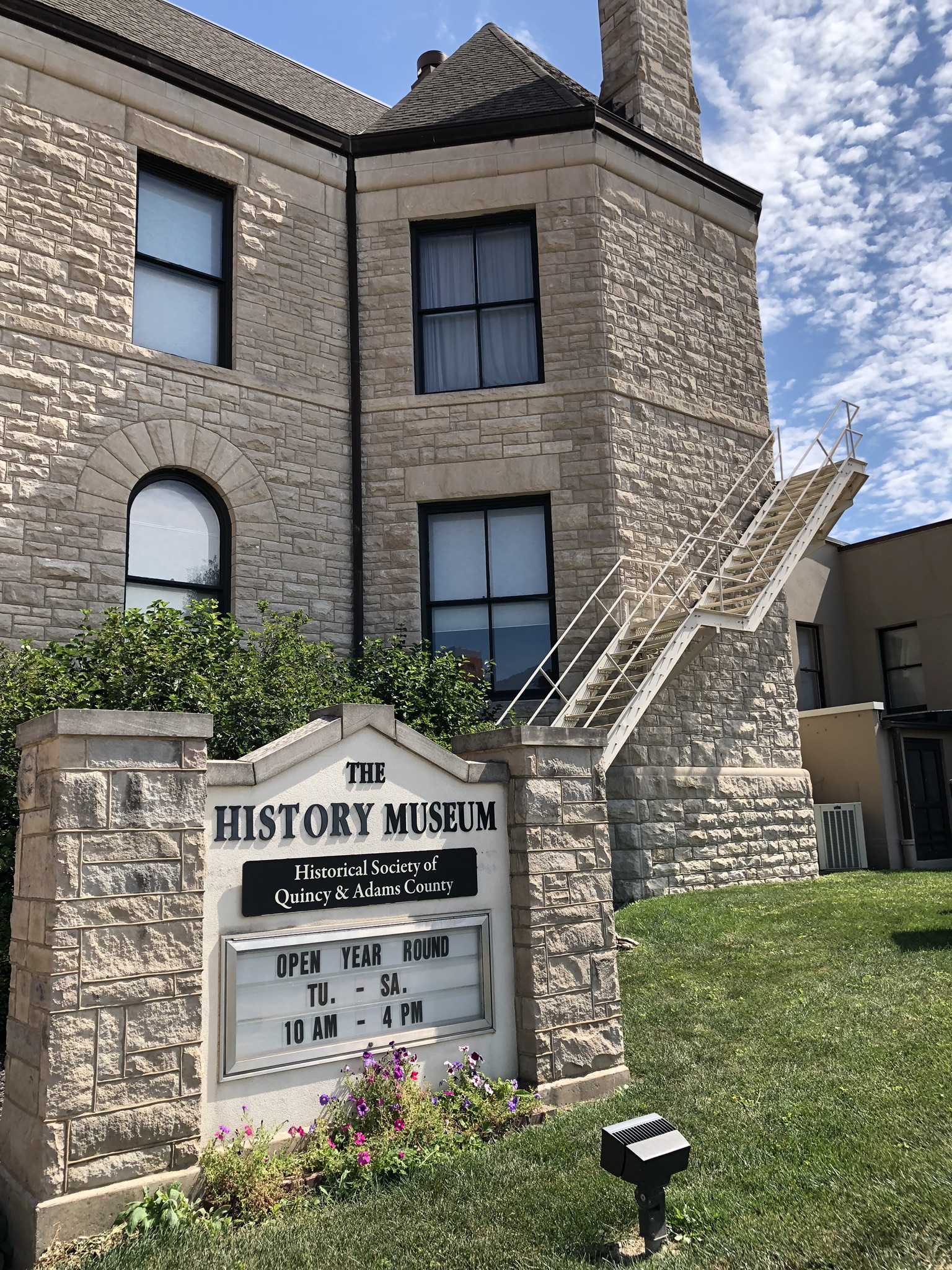
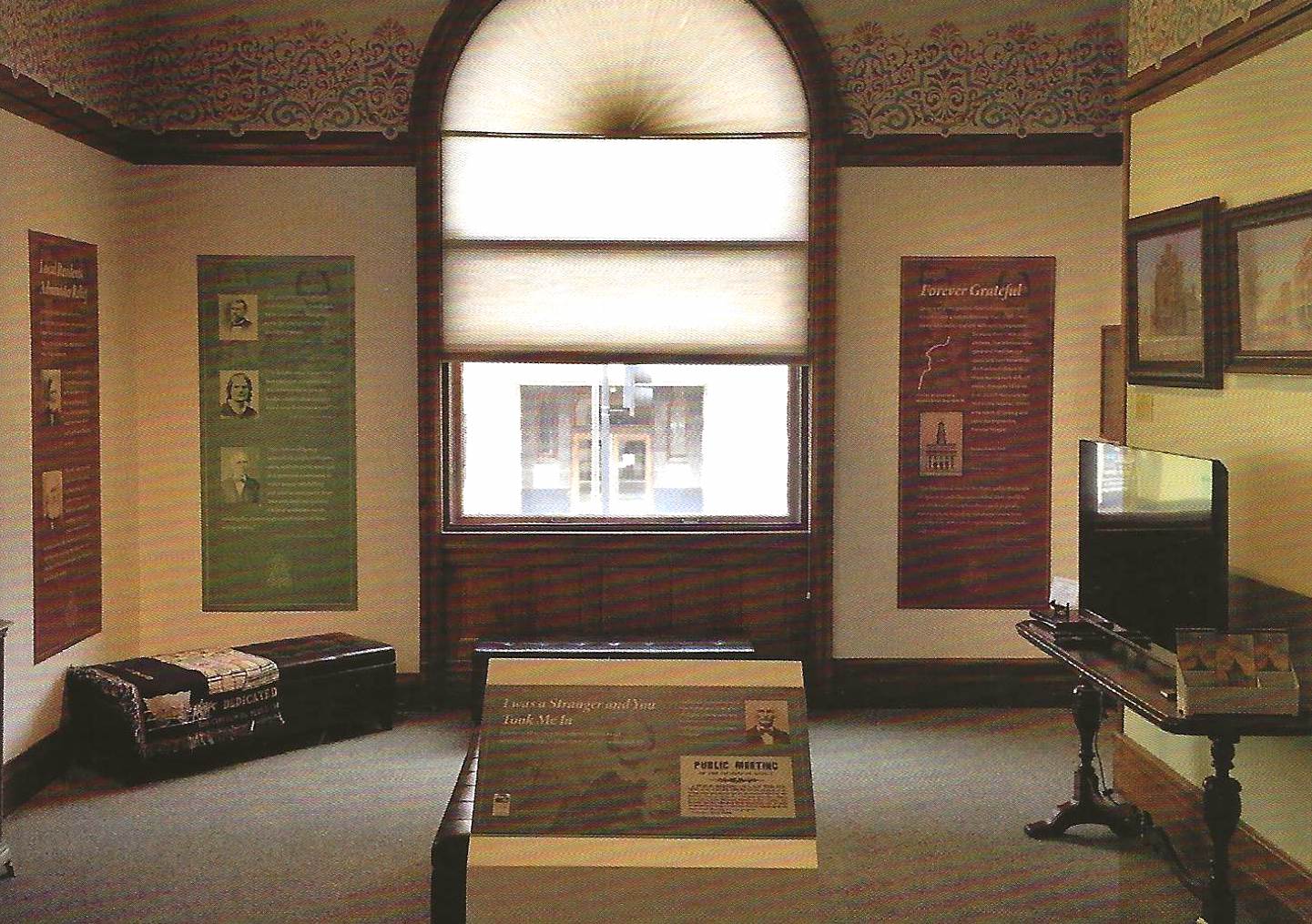
The History Museum Second floor: Mormon Exhibition
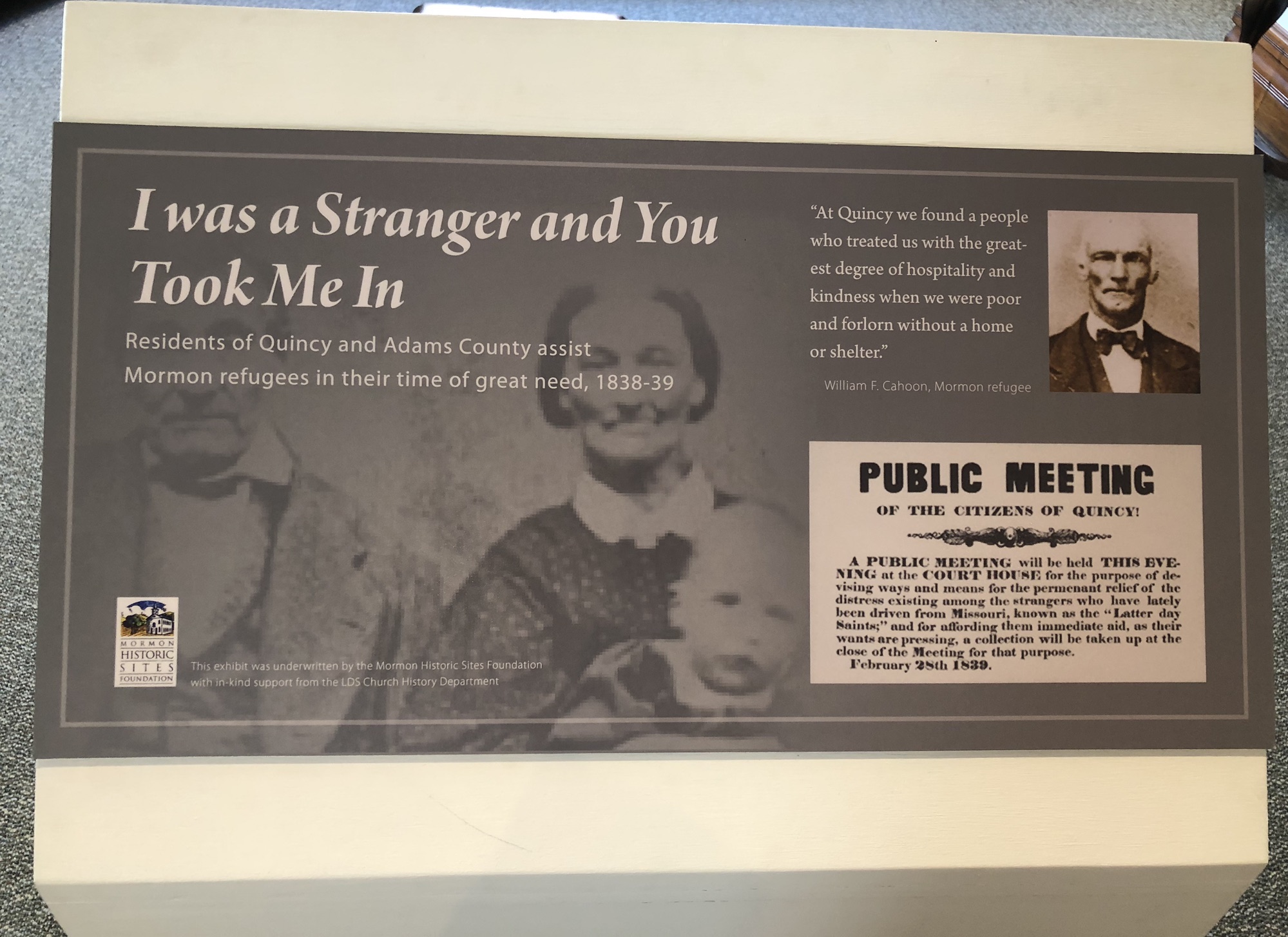
REFERENCES
Black, Susan Easton. The Quincy Miracle. A Rescue Never to be Forgotten. (History of the Saints, 2016) – popular
Cuerden, Glenn. Images of America. Nauvoo. (Arcadia, 2006) – popular
Foote, Kenneth E. Shadowed Ground. America’s Landscapes of Violence and Tragedy. (University of Texas Press, 1997), pp. 246-264. – academic
Leone, Mark P. Roots of Modern Mormonism. (Harvard University Press, 1979) – academic

